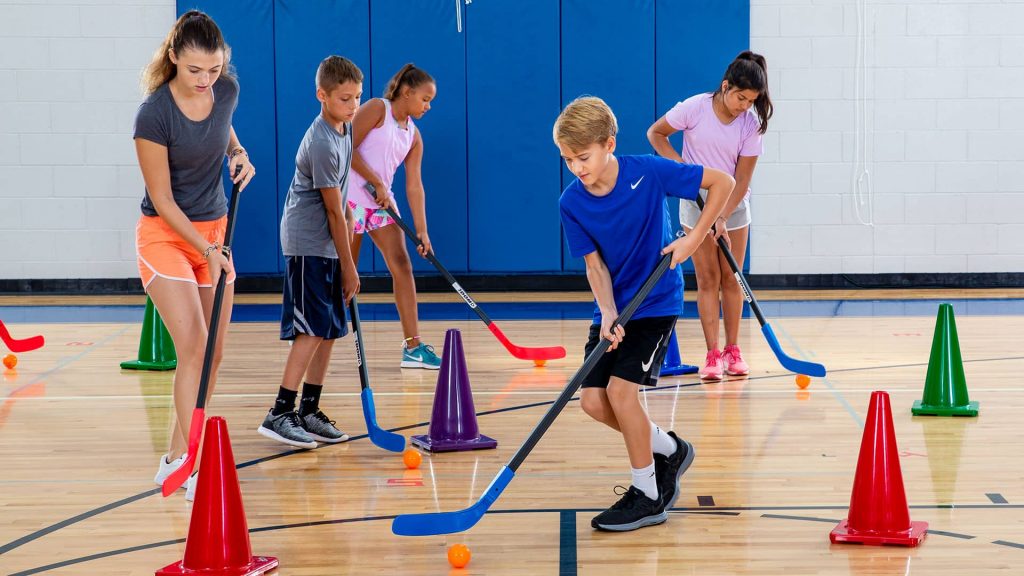
Throughout my career as an elementary physical education teacher, I have developed a strong appreciation for teachers who develop a natural sense of pace when creating and implementing a lesson. Too often I meet or observe elementary physical education teachers who focus on packing as much content as possible into a lesson. Over time, this can cause a subconscious value on quantity over quality, which can take some cognitive opportunities away that occur at a slower, more appropriate lesson pace. Below are the four “P’s” I keep as considerations that I believe can easily be overlooked but also have a positive impact in helping teachers develop a sense for an appropriate pace for their lessons. At the elementary level, these small opportunities can have great cognitive benefits for students.
1. Opportunities for Prediction:
When students enter physical education class, they immediately begin to analyze and predict what may be happening in the lesson for the day. This can occur from simply recalling the previous lesson, analyzing the equipment they see, or noticing the layout or set-up differences from prior experiences. Even at the most basic levels can predicting occur. An example of this may look like a teacher numbering off students to cones, calling student #’s 1, 2, and 3 to the red cone, 4, 5, and 6 to the green cone, etc. As students learn the temporary pattern the teacher is using, they begin to analyze and predict which cone they may end up at. It is countless moments like this, through basic set up, that students can utilize prediction.
2. Opportunities for Patience:
In my opinion, one of the most neglected aspects of student development in an environment that is always about maximum movement and participation is patience. While physical activity should be a constant in every lesson, it is important to create opportunities where student patience is exercised. This can occur when teachers are not afraid to take time during explanations, demonstrations, and answering questions when appropriate rather than just getting the students moving as quickly as possible and checking for understanding later.
As obvious as this may seem, one of the most basic yet effective situations for a young student to learn patience is when two students are taking turns using a piece of equipment. A simple example would be two students taking turns learning how to jump rope. With a short wait time, the students waiting for their turn not only have the ability to rest, but also observe and analyze their partner, taking information in and applying it to their own upcoming turn. This allows students to create value in the time they are practicing patience which may not have occurred if everyone received their own jump rope to work with for every lesson.
3. Opportunities for Processing:
One of the biggest misconceptions that physical educators seem to always be battling is that PE is all about getting in a workout and as much physical movement as possible. We PE teachers of course know there is an abundance of student processing that is always happening. I personally believe that when a lesson skill or activity is being broken down, student processing is at its highest. This is especially true at the elementary level. An example of this occurs when teaching something as simple as the wind-up/swing motion in the sequence of rolling a ball. Rather than quickly demonstrating the skill and sending the students off to practice, asking students what a swing arm reminds them of (a swing, old clock, etc) stimulates more processing and deeper visual understanding of a fundamental component of the skill. Now imagine the benefits of understanding that can occur for students when applying these small, quick opportunities for students to process on a regular basis.
4. Opportunities for Practice:

When thinking about an appropriate pace for a lesson based on skill level and objectives, consider how often you allow practicing to occur before moving on. If a teacher is primarily focused on quick pace and maximum movement and feels that content needs to be changed often to keep student engagement up, time devoted to practicing a skill probably takes a backseat. I strongly believe that when students understand the concepts of a skill or activity, they have a higher chance of being proficient at that skill or activity, which increases the likelihood of a positive connection to that activity, which is then solidified through practice and increasing overall participation. But when the opportunity to practice is quickly skipped over in an effort to start a game or move onto a new activity, all the opportunities previously mentioned are limited or lost. Do not be afraid to allow your students to find enjoyment in simply practicing!
I hope you can take some of these considerations and ideas and apply them towards your own personal style in developing an appropriate pace for your students while creating opportunities for cognitive development to take place!





3 Responses
Very substantial and useful in my field as a secondary school teacher
Hi! I am a long term sub for a PE teacher at Garfield HS I’m Seattle. I’m looking for activities to introduce and develop skills for floor hockey. Several things speak to me in this article. Anyone have some tried and true activities and)/)or suggestions to pass along!??
Hi Adrian! I am glad you found some ideas you connect with in the blog.
Please feel free to email me at thepethinker@gmail.com with any questions you may have. I am
happy to help!